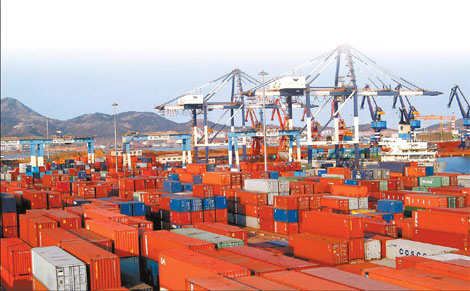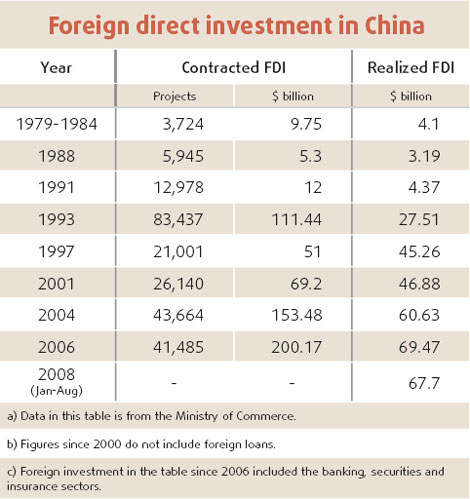
China's huge market and cheap labor costs have made it the largest foreign direct investment recipient of all developing countries for 16 years straight.
"FDI has been a significant force for China's development as it's brought new technology, management know-how and capital to the country," Vice-Premier Wang Qishan said at a recent investment forum.
China received US$82.6 billion of FDI in 2007, and that figure has already climbed to US$60.7 billion for the first seven months of this year, up 44.5 percent year-on-year, according to commerce ministry statistics.
Investment goes mainly to the manufacturing industry, which takes about half of the overall capital inflow. But the proportion is falling, as more investors look to the service sector. For instance, major foreign banks including HSBC and Standard Chartered have set up offices in China and some have even started renminbi businesses here.
The country is climbing up the value chain in the manufacturing sector. In the early days, most foreign investors came to the country to set up factories. Now, more corporations have established their regional headquarters in Chinese cities such as Beijing and Shanghai. IBM has even relocated its global procurement headquarters to southern coastal city Shenzhen.
China remains a magnet for FDI with its massive market potential and improving infrastructure. But the government is getting more selective about the quality of investment it seeks. It has started to curb investment in energy-consuming and environment-polluting industries, instead encouraging investors to go into the hi-tech, modern agriculture and service industries.
The government is also trying to bring more investment to the less developed northeastern and western areas of the country.
Meanwhile, capital outflow is increasing. Chinese businesses invested over US$18.6 billion overseas last year, while total outbound investment was just US$2.5 billion in 2002, according to the commerce ministry. Outbound investors are most active in the financial, mining and oil sectors.

(China Daily September 25, 2008)